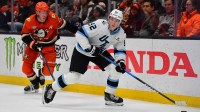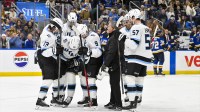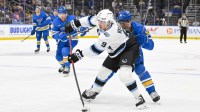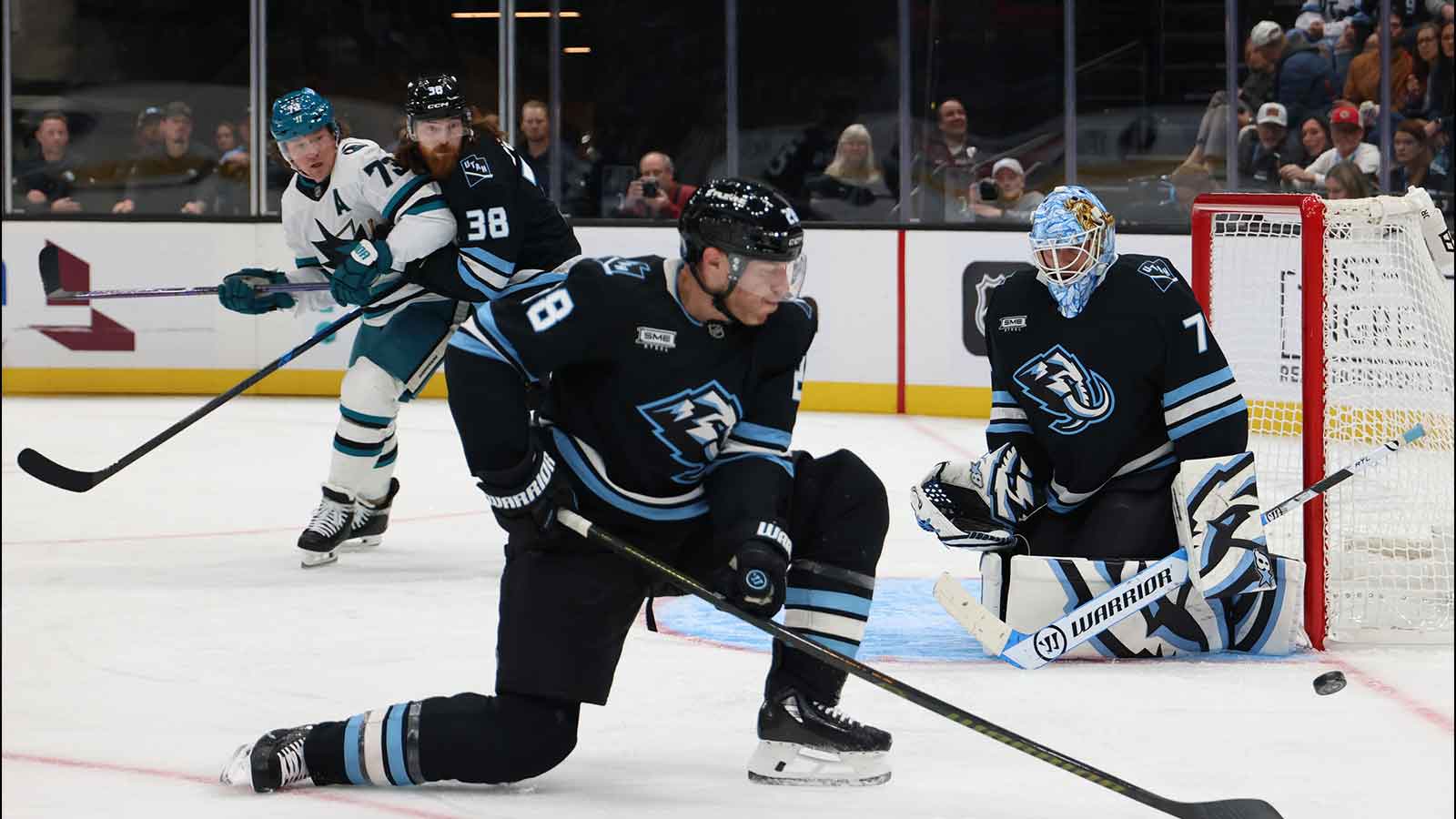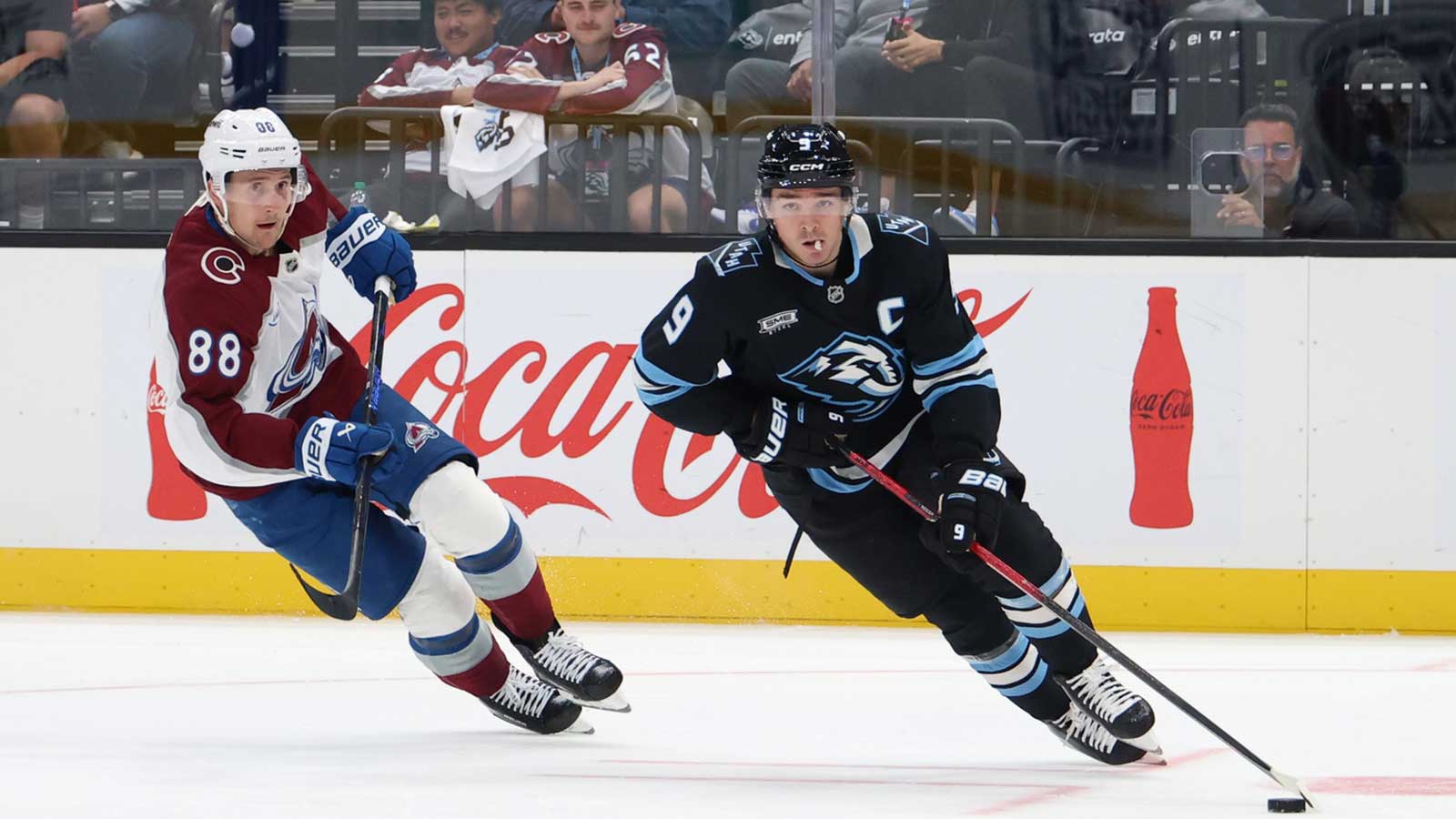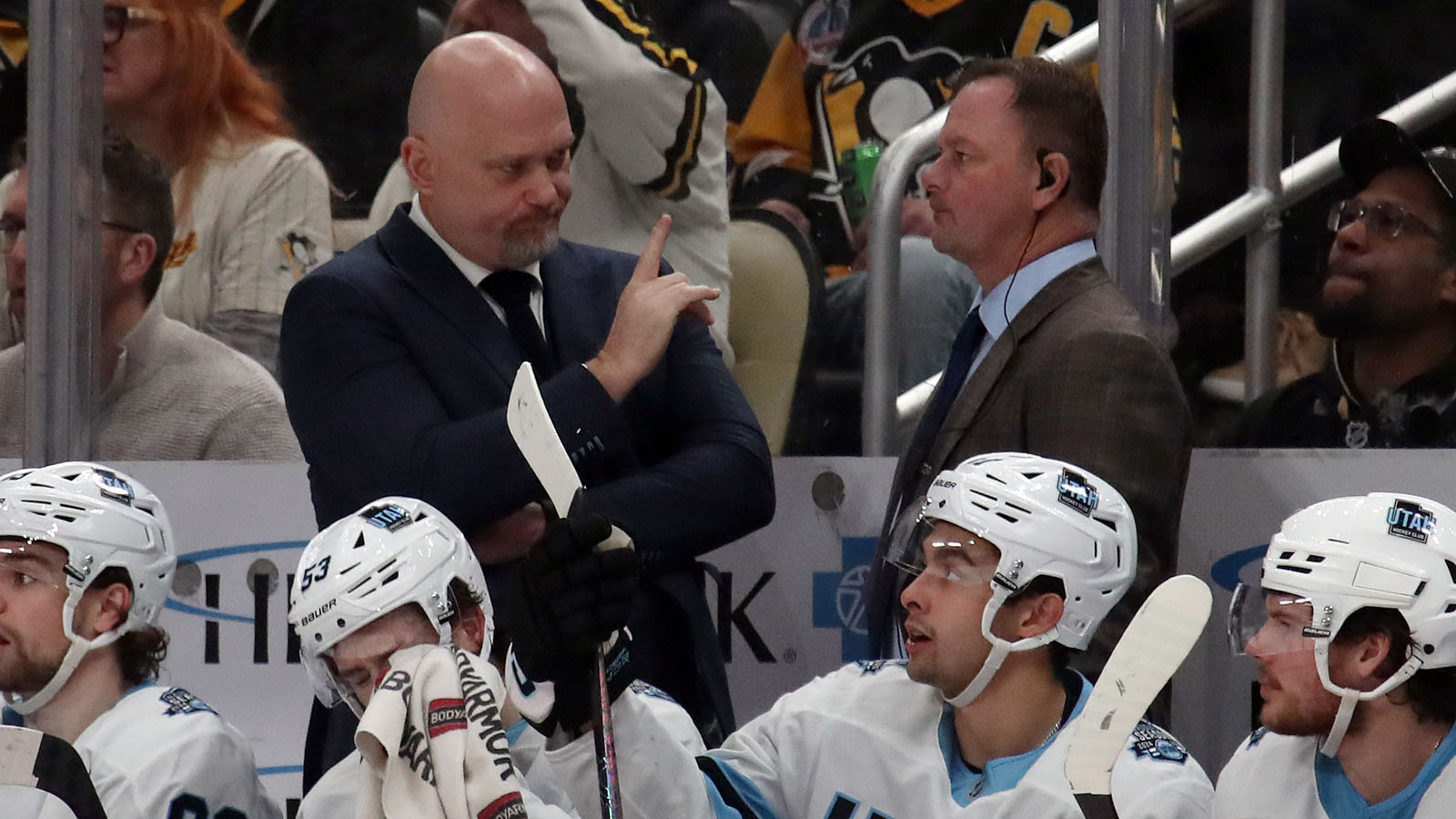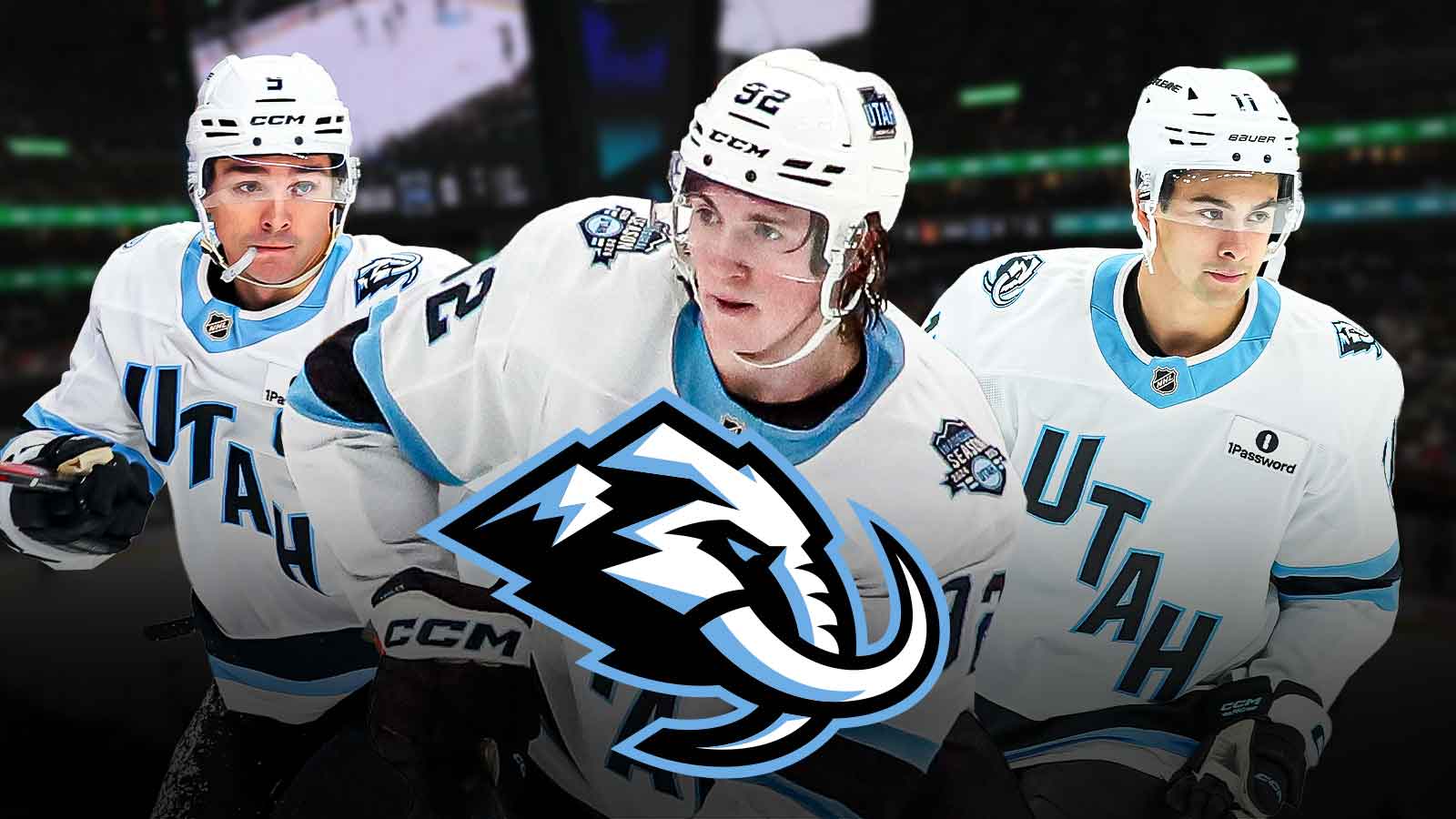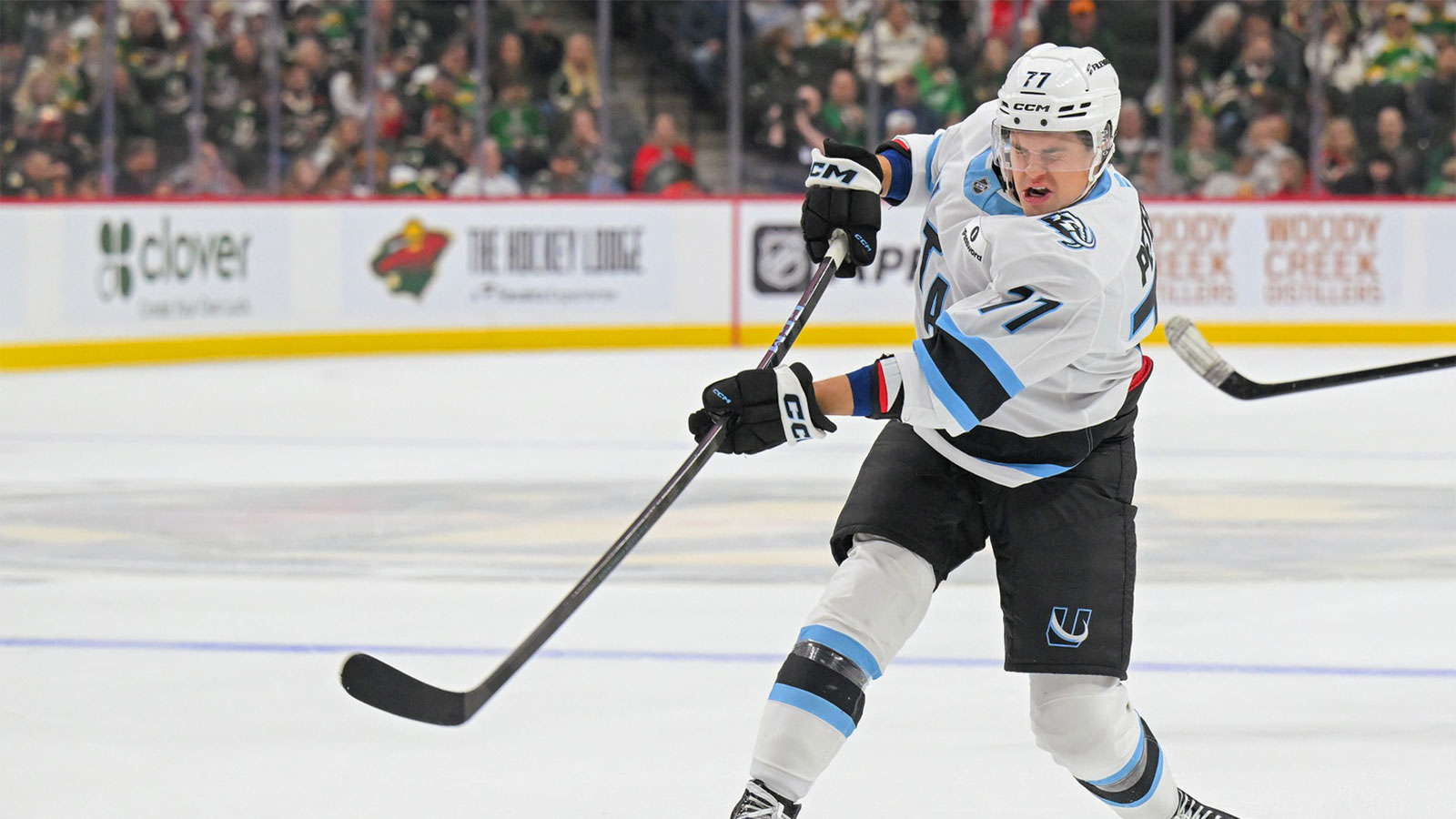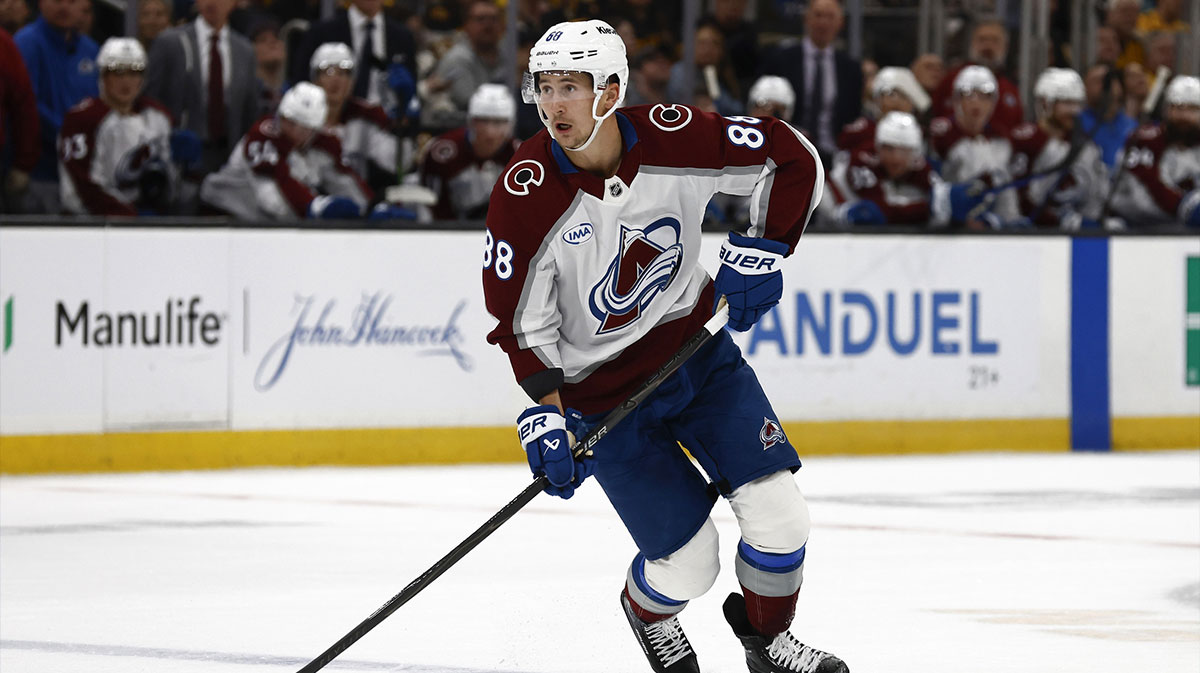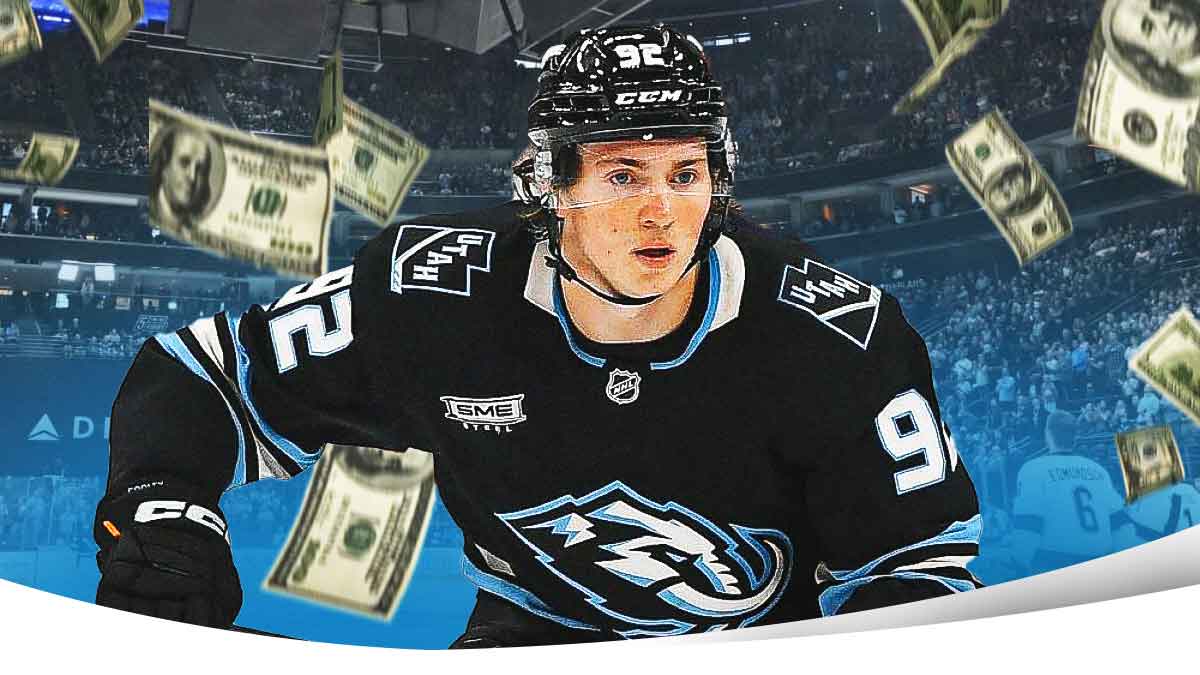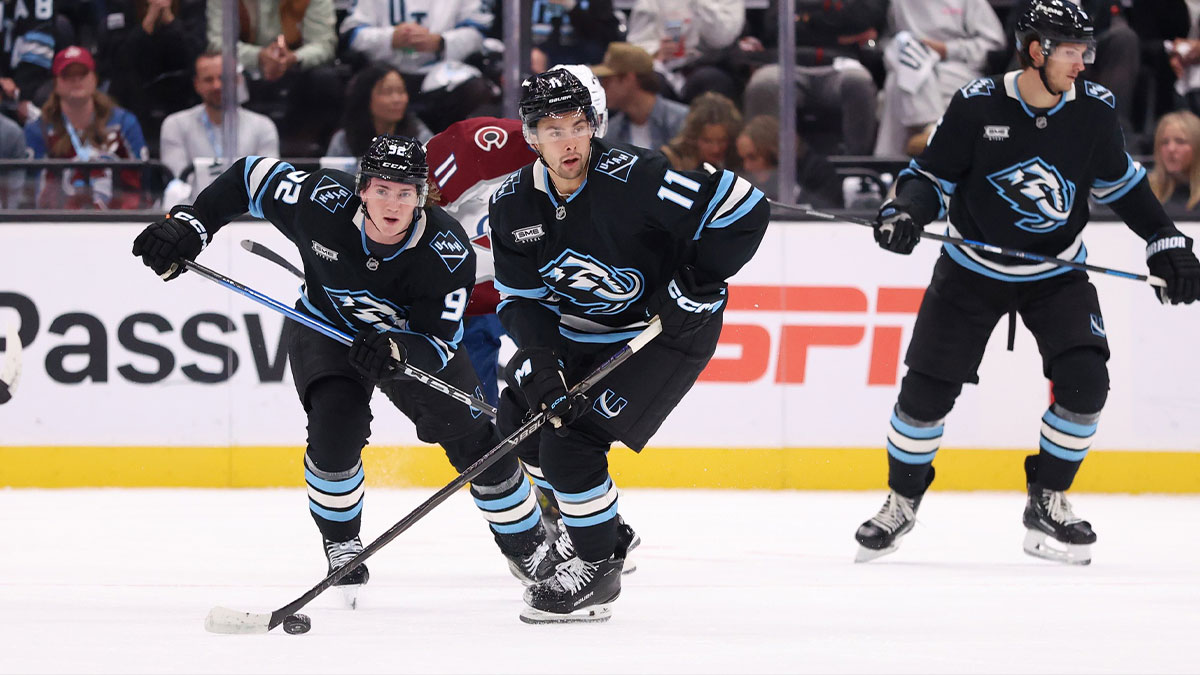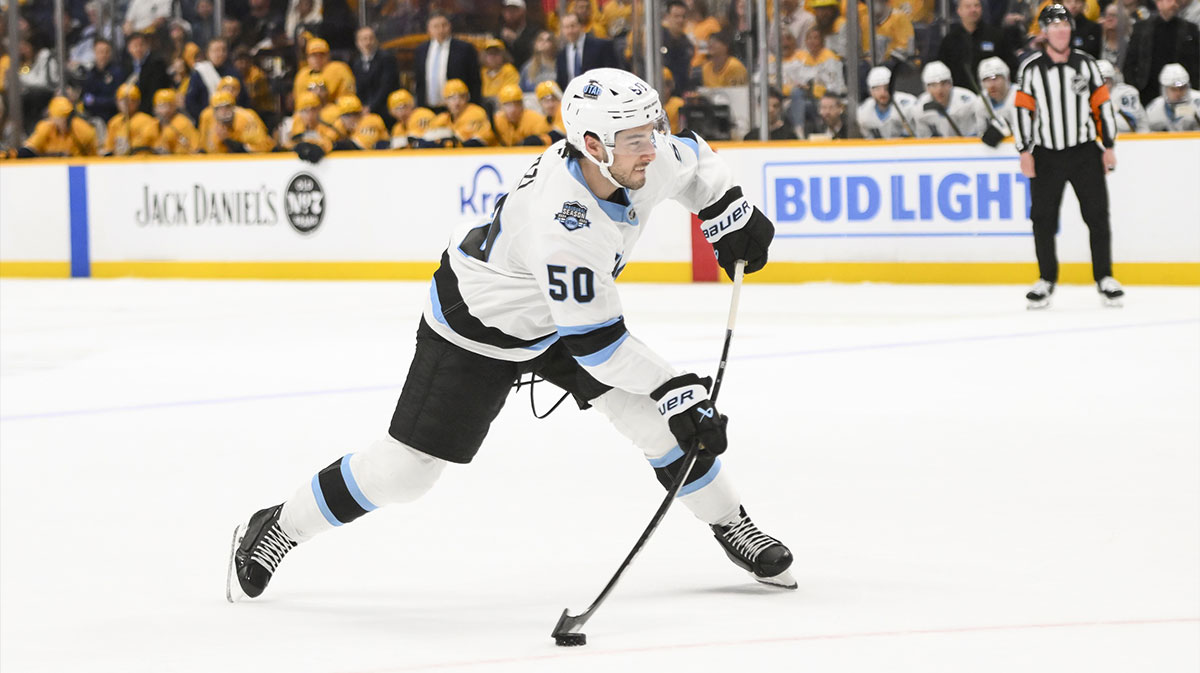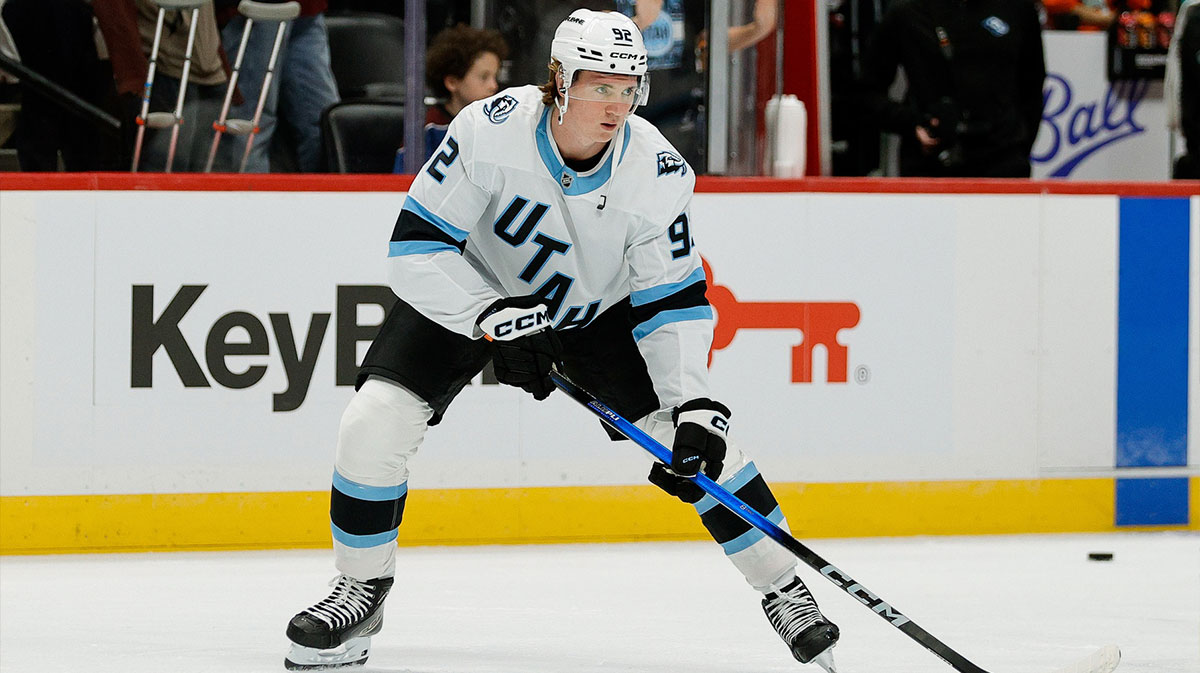Don't count the Utah Hockey Club out of the playoff race just yet. Although they're currently just above .500 with a 26-24-9 record, the club has been playing some of its best hockey of the season as of late. Utah has won two games in a row and five of seven dating back to February 4. And with that, the magic number to sneak into a wildcard slot in the Western Conference is down to just four points.
Coming out of the 13-day 4 Nations Face-Off break, Utah lost 5-3 to the Los Angeles Kings before enjoying back-to-back 2-1 victories. With Karel Vejmelka between the pipes, Andre Tourigny's group defeated the Vancouver Canucks on Sunday and Chicago Blackhawks on Tuesday, respectively. While the West is a logjam, with teams like the Canucks, Calgary Flames, St. Louis Blues and Anaheim Ducks all hoping to snag one of the last two playoff spots, Utah has certainly played some encouraging hockey since the break.
But the March 7 NHL Trade Deadline could be complicated for general manager Bill Armstrong and the front office. Despite suffering a plethora of injuries throughout the season — most notably long-term absences for defensemen Sean Durzi and John Marino — the roster is now almost fully healthy with 23 games left.
And Armstrong has already shown that he isn't afraid to make blockbuster moves to help make the first campaign in Salt Lake City a successful one.
Utah Hockey Club GM has shown he isn't afraid to make a splash
Armstrong made it clear to The Athletic's Pierre LeBrun earlier this week that the front office has no desire to sell ahead of the trade deadline, which is now just eight days away.
“We’re right in the race,” Armstrong told LeBrun. “We’re right in the hunt. It’s kind of where we thought we’d be, to be honest with you. It’s what we always talked about, playing meaningful games and pushing to see if we get into the playoffs. I like our team. I like our fight.”
There are a couple of reasons why Utah is hesitant to sell, LeBrun reported, the most notable one being the fact that the team has already been stockpiling draft picks as a rebuilding club for years. This time around, especially considering it's the first year in Salt Lake City, they want to battle right to the bitter end.
“We’ve had a million picks,” Armstrong explained to LeBrun. “We think we have five really good, high-end prospects in our organization. … We have a lot of room on the salary cap. We have a good team on the ice. And we’ve got a lot of good prospects coming. So for us, we do want to start building it in front of our fans and continue to take a step. And we do that with the guys that are fighting (for a playoff spot) right now.”
Armstrong already made a splash before the 2024-25 campaign started, acquiring two-time Stanley Cup champion Mikhail Sergachev from the Tampa Bay Lightning before making another trade to add Marino to the roster. Utah is trying to add, not subtract, and as LeBrun reported, “they hope to stay in the race long enough to continue on that path.”
With a nearly fully healthy roster, and the team starting to gel at the perfect time, it looks like they'll be continuing on that path and not selling between now and March 7.
The roster is full of trade candidates, but Utah reportedly won't be selling
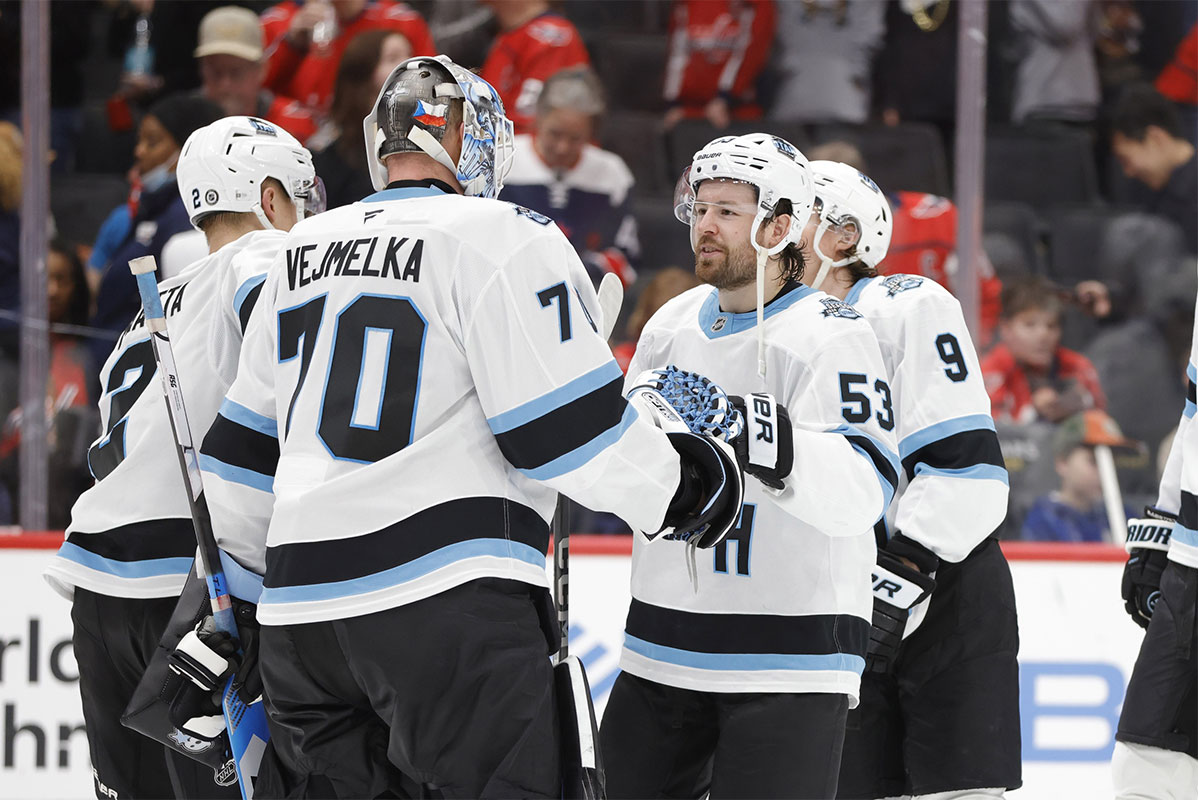
Armstrong's comments make it seem like a couple of trade chips will not be getting a change of scenery. The main one is Vejmelka, but he's been much better than Connor Ingram lately and the organization has reportedly already been discussing an extension with the Czech goaltender.
The biggest bargaining chips Utah has is in their lineup depth. That includes winger Matias Maccelli, who has managed just 18 points in 52 games and been healthy scratched more than once. He amassed a career-high 57 points last year, but he looks like a different player this year.
As well, there are a couple of depth forwards who continue to age and aren't adding too much to the equation in 2024-25. That includes a trio of veterans in Lawson Crouse, Alexander Kerfoot and Nick Bjugstad. None of them have been great this year, and the thought would be that they would be on the move before the deadline.
Even if that doesn't happen, Utah needs younger depth, and that projects as the team's fatal flaw in 2024-25: a lack of effective offensive talent lower down the lineup.
Utah's fatal flaw is a lack of young offensive depth
Players like Crouse, Kerfoot, and Bjugstad just aren't moving the needle too much. Although the top of the offense is well-equipped for the future, led by a couple of stars in Dylan Guenther and Logan Cooley, as well as a few established veterans in Clayton Keller and Nick Schmaltz, the bottom-six hasn't contributed much at all this year.
The core pieces are there, but the roster badly needs more complementary talent to build around — specifically a winger. Could that be Anaheim Ducks' Trevor Zegras? Or perhaps even Vancouver Canucks' Brock Boeser, who is in the midst of a down year in British Columbia and doesn't yet have a new contract?
Finding the right balance of young players up and down the lineup is key, especially as Utah hopes to enter its contention window as soon as possible. As Pro Hockey Rumors' Gabriel Foley wrote earlier this week, “they need to cycle out their aged vets for a core that can better support the likes of Cooley and Guenther in the years to come.”
Foley continued: “The open market could offer plenty of players that fit that mold, including shoot-first winger Nicholas Robertson in Toronto and heavy-hitter Trent Frederic in Boston. Even acquiring a player closer to their prime, like Boston’s Justin Brazeau or Columbus’ Mathieu Olivier, could stabilize a Utah bottom-six comprised largely of 30-year-olds.”
There are a ton of options that Utah could explore to shore up the depth, and that could happen imminently as the roster continues to hang around the playoff picture. It'll be interesting to see if the squad can string a couple more wins together before the deadline, and convince Armstrong that buying, rather than selling, is the right move ahead of the stretch run.


